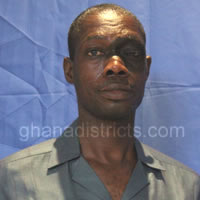Location and Size
The Sene West District was created out of the then Atebubu District in 1988. It is one of the twenty two (22) districts in Brong Ahafo Region of Ghana. The district lies within Longitudes 0o 15’E and 0o 15’W, and Latitudes 7o N and 8o 30’N. Out of the 19 administrative districts in the Brong Ahafo Region, Sene has the largest land area, which is about 8586.44 km2. The land size could be seen as a resource potential for development.
However, the long distance from the district capital to the regional capital, Sunyani (about 241km via Tachiman and Nkoranza) poses as one of the major development constraints in the district. It is the farthest district from Sunyani, the regional capital. This, coupled with the poor condition of the main road to the district has generally described the area as remote and this affects its potential to attract staff postings to the district.
Sene district is bounded in the North by the Volta Lake and East Gonja District (in the Northern Region), to the East and South/East by the Volta Lake, Krachi West, Krachi East and Jasikan districts in the Volta Region; to the South and South/West by Afram Plains and Sekyere East districts in the Eastern and Ashanti Regions respectively. To the West, by Atebubu-Amanten and Pru districts of Brong Ahafo Region. Figures 1.1 and 1.2, show clearly the location of the Sene district in National and Regional contexts.
Topography and Drainage
The Sene District forms part of the Voltaian sandstone basin which is the most extensive physiographic region. The topography of the area is generally rolling and undulating. This is a potential for mechanized agricultural development. This is also an opportunity for the promotion and adoption of Intermediate Mode of Transport (IMT) in the district. The average height in the district is about 166 meters above sea level.
The district lies within the Sene-Obosom River Basins and the Volta Lake. Three major rivers drain the district. These are the Volta, the Pru and Sene Rivers. This has provided opportunities for the emergence of fishing as a major economic activity in the district. In addition to these major rivers, there are minor rivers, which dry up during the dry season.
The Volta Lake covers a considerable portion of the district. The formation of the Volta Lake has resulted in the creation of a number of Islands in the district. These islands represent opportunities for tourism development, which has not yet been exploited. Now, these islands present special problems in development and governance due to the peculiar transport situation.
Because of the low elevation of the district, in terms of its location in the flood plains of Volta, Sene and Pru rivers, a considerable proportion of the district is liable to flooding during heavy rains. Coupled with the existence of a number of swamps, this has provided opportunities for rice farming in the district. Future development of the district could therefore, focus on large-scale rice cultivation.
The great potential of the Volta Lake in the development of the district has not been fully harnessed. For instance, it could aid irrigated agricultural development in the district, and treated water supply. To some extent, the lake has provided opportunities for water transport in the district. The Sene River, which has currently become an arm of the Volta Lake in the district, acts as a barrier separating the Southeastern part from the rest of the district. This has become a major problem for the development of that part of the district as it affects transportation.
Climate and Vegetation
The District falls between the Wet Semi-Equatorial and Tropical Continental Climatic Regions of Ghana. That is the district is part of the transitional zone between the two major climatic regions. The Sene District is characterized by high temperatures throughout the year with a mean annual temperature of about 27o C. The Relative Humidity of the area is quite high, averaging over 75 percent throughout the year. It, however, varies generally between the wet and dry months.
As it is characteristic of the Brong Ahafo Region, Sene district has a bi-modal rainfall regime. April to July is the period for the major rainfall while September to late October, is the minor period. Mean annual rainfall of about 1191.2 mm is recorded in the district. Following the rains is the dry season, which starts in November and ends up in March. The dry conditions during this period promote bushfires, which sometimes consciously started by farmers and hunters, or unconsciously by improper handling of fire. The dry season is quite pronounced with the main season beginning around mid-November and ending in February. This condition predisposes the area to rampant bushfires.
Vegetation is one of the main factors that help greatly in the determination of resources and character of an area. The geographical location, rainfall pattern, soils and others determine the vegetation of an area. The vegetation of the Sene district is predominantly Guinea Savanna woodland, which has over the years, become so resistant to fire, due to the type of farming practices adopted by the people.
Generally, tall grasses such as the elephant grasses and varieties of anthropogenic species mixed with savannah wood type of trees such as ‘Daniela Olivetti Terminalia avocado’ can be identified in the district. The vegetation opens up gradually and the trees reduce in height as one travels to the northern end of the district.
Geology and Soils
The rocks underlying the Sene District form part of the Voltaian formation which covers about two-thirds (2/3) of the surface area of Ghana. The rocks belonging to this formation are mainly sedimentary and exhibit horizontal alignment. Sandstone, Shales, Mudstone and Limestone are the principal examples of these rocks.
The capability of any soil to support plant life depends on its water-holding capacity, its depth and fertility. The soil type in the Sene district is the savannah ochrosol, which is generally well drained, friable and porous in nature. The soils in the area are generally medium-textured ochrosols, which moderately contain organic matter. These soils are very useful for the cultivation of food crops such as cassava and yam, maize, guinea corn, groundnuts, rice and cowpea, as well as vegetables such as tomatoes and garden eggs. The distribution of crops grown is indicated in figure 1.3.
Natural Resources
The most abundant natural resources in the district are land, water bodies and forest reserve. Only about a third of the district’s land size of 8586.44 km2 is habitated. The rest are available for agricultural production and investment. Indeed, the land could be seen as potential for commercial agriculture. Many water bodies drain the district. Notable among them are the Volta Lake, the Pru and Sene rivers.
The water bodies in the district serve as a potential source of fishing, irrigation schemes and small town piped schemes for potable water. The water resource potential has provided opportunities for emergence of fishing as a major economic activity in the Sene district. The Volta Lake offers water transport opportunities for the inhabitants. The Digya National Park (forest reserve), which spans to the district could be developed and protected to attract tourists to the area. The attraction of tourists to the area could be a driving force to further development of the area tagged ‘deprived’.
Date Created : 11/29/2017 3:19:43 AM





 facebook
facebook X (twitter)
X (twitter) Youtube
Youtube +233 593 831 280
+233 593 831 280 0800 430 430
0800 430 430 GPS: GE-231-4383
GPS: GE-231-4383 info@ghanadistricts.com
info@ghanadistricts.com Box GP1044, Accra, Ghana
Box GP1044, Accra, Ghana